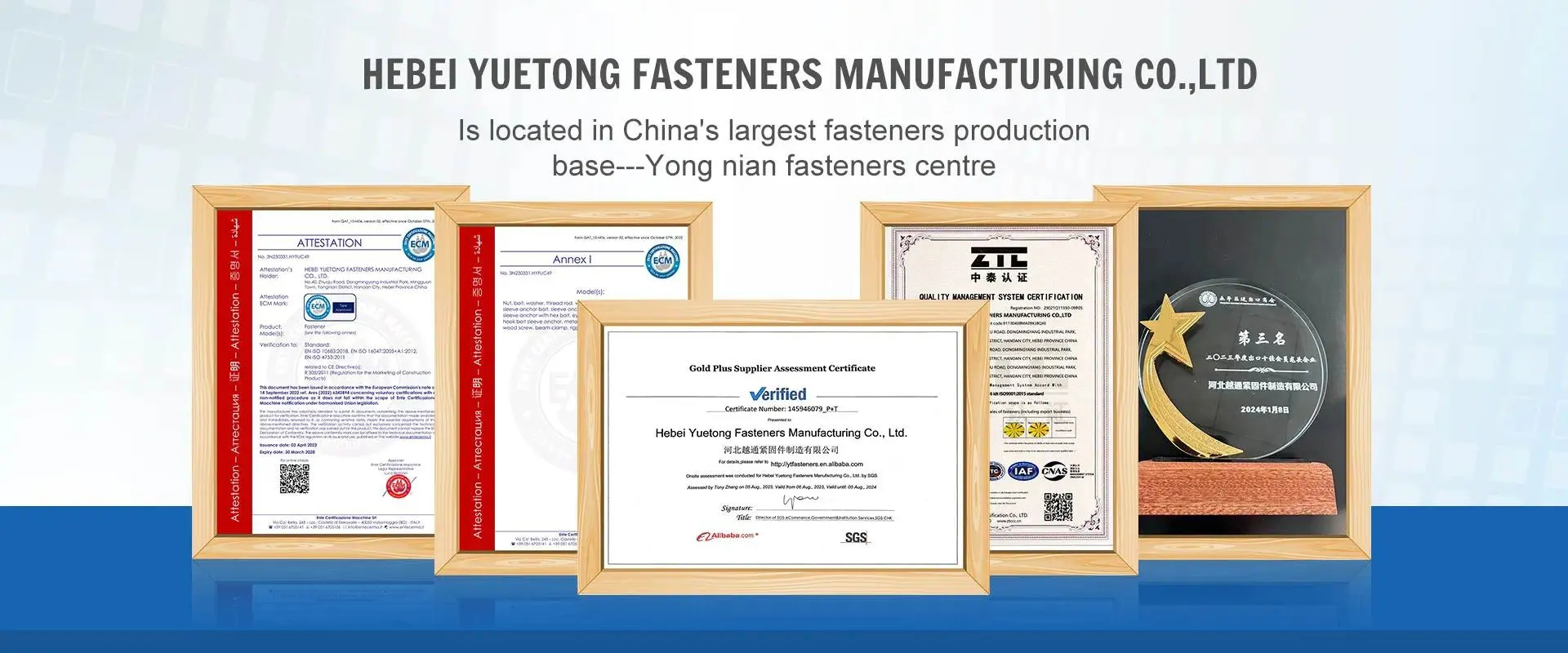नवम्बर . 10, 2024 10:58 Back to list
Innovative Solutions for Secure Expansion Wall Anchoring Systems in Construction Projects
Understanding Expanding Wall Bolts A Comprehensive Guide
Expanding wall bolts, often referred to as expansion anchors or expansion bolts, are specialized fasteners designed to securely attach fixtures to walls, ceilings, or other structures made of concrete, masonry, or brick. They play a crucial role in construction, carpentry, and DIY projects, ensuring that items remain firmly in place under various conditions.
What are Expanding Wall Bolts?
Expanding wall bolts are typically composed of a bolt, a sleeve (or expansion body), and a mechanism that allows the bolt to tighten against the wall as it is driven in. The sleeve is inserted into a pre-drilled hole in the wall. When the bolt is turned, the sleeve expands outward, gripping the wall's interior surface. This expansion occurs in response to the twisting motion of the bolt, creating a strong hold that can resist pulling or shearing forces.
Applications
These versatile fasteners find applications in a wide array of projects, ranging from heavy-duty installations, such as securing large shelving units, to lighter applications like hanging pictures or lightweight art. The primary material of the wall being fastened to dictates the choice of expanding wall bolt, as different materials require different types of anchors. For example, in concrete applications, heavier-duty expansion bolts made from steel or stainless materials are preferred to handle the loads.
Types of Expanding Wall Bolts
There are several types of expanding wall bolts, each designed for specific uses
1. Wedge Anchors These are the most common type of expansion bolts, widely used in concrete. They have a wedge-shaped end that provides a strong anchor point.
2. Sleeve Anchors These consist of a bolt and a sleeve that expands as the bolt is tightened. Sleeve anchors are suitable for use in brick or masonry.
3. Toggle Bolts Designed for hollow walls, toggle bolts feature spring-loaded wings that open inside the wall when the bolt is inserted. This mechanism provides a secure hold on thin or hollow materials.
4. Heavy-Duty Expansion Bolts These are designed to support significant weight and are often used in industrial applications.
expanding wall bolts

Installing Expanding Wall Bolts
To install an expanding wall bolt, follow these steps
1. Select the Right Bolt Choose a bolt that is suitable for the material and weight of the item you intend to hang.
2. Drill a Hole Use a drill to create a hole in the wall or material where the bolt will be installed. The hole diameter should match the specifications of the bolt.
3. Insert the Bolt Place the expansion bolt into the hole, ensuring the sleeve is positioned correctly.
4. Tighten the Bolt Use a wrench to turn the bolt clockwise. As you tighten, the sleeve will expand against the wall, securing the bolt in place.
5. Attach the Fixture Once the bolt is secure, you can attach the item you need to hang.
Advantages
The primary advantage of expanding wall bolts is their ability to provide a secure fastening solution, even in materials that would typically be challenging to anchor into. Their expanding mechanism allows for a greater distribution of load, making them ideal for heavy items. Moreover, the installation process is relatively straightforward, making them accessible for both professionals and DIY enthusiasts.
Conclusion
Expanding wall bolts are essential components in construction and home improvement projects, offering a reliable and efficient method to secure fixtures to walls. By understanding their types, applications, and installation methods, individuals can confidently embark on a range of projects, ensuring safety and stability in their installations. Whether you're outfitting a new home, undertaking renovations, or simply hanging art, the right expanding wall bolt can make all the difference.


